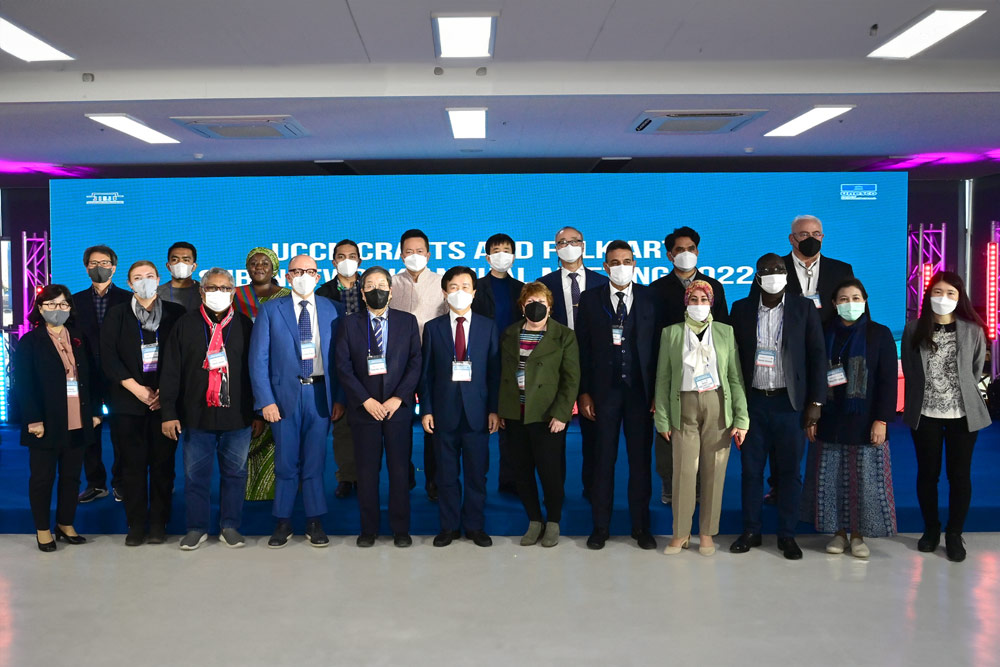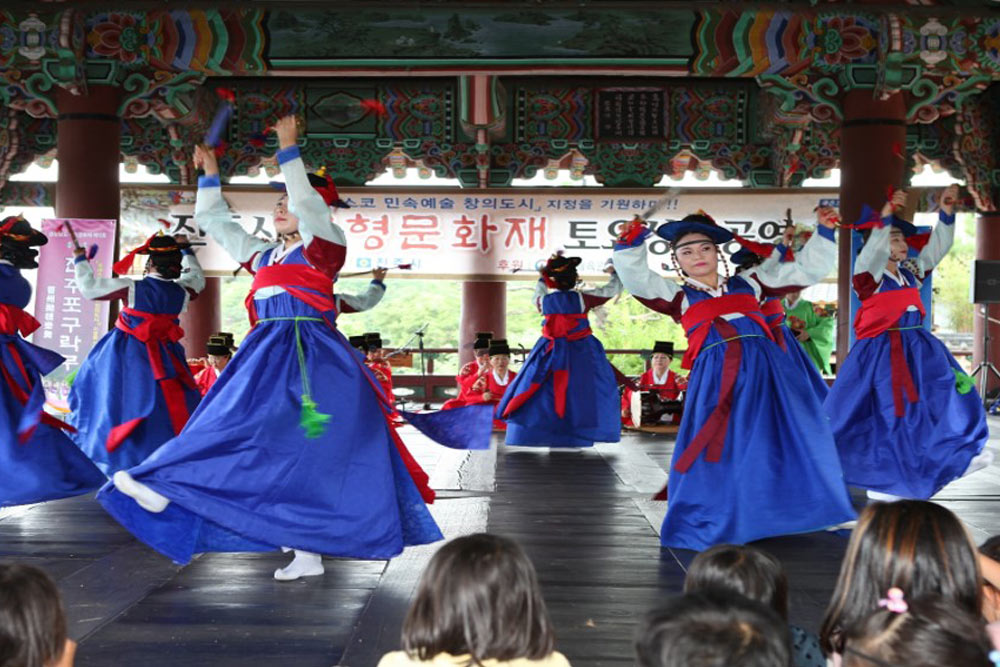
Jinju Cultural Assets
Jinju has been known for abundant traditional arts and culture. Popular arts and upperclass art practices, —especially, traditional dances— are handed down from generation to generation. Jinju citizens have always cherished their traditional folk arts and the government supports them at a local, regional and national level, making significant efforts to preserve tradition while promoting modernization.
Several folk arts, some of which had disappeared due to the historical context, havebeen restored by citizens and registered as Intangible Cultural Heritage of Korea1 (of Gyeongsangnam-do), and some have been added to the UNESCO’s Intangible Cultural Heritage list as well.
- Jinju Ogwangdae (‘masked dance performance’, designated as Gyeongsangnam-do Intangible Cultural Heritage in 2003). Once disappeared, this traditional dance was successfully re-enacted after 60 years, based on recorded scripts and masks collected by folklorists, and thanks to the initiative of citizens and community leaders.
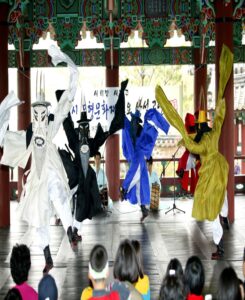
- Sotdaejaenginori (‘traditional acrobatics’). These ancient composite art performances, which include “Sotdaetagi —climbing a “Sotdae” (‘tall pole’) and doing acrobatic movements around it with ropes— were played in Jinju by “Sotdaejangipae”, a professional artist group who is the predecessor to circus troupes in Korea. Currently this folk art is being preserved and transmitted by Jinju Sotdaejaenginori Conservation Association.
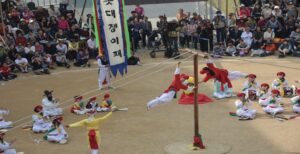
- Jinju Geommu (‘sword dance’, designated Intangible Cultural Heritageof Korea in 1967). This sword dance features sophisticated movementsand wrist turning with an unbending sword, and is usually performed by professional female entertainers. It is highly appreciated for its artistic
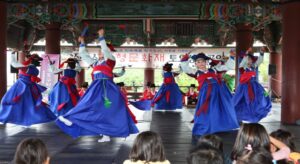
- Jinju-Samcheonpo Nongak, (‘farmers’ music’ and performances from old Samcheonpo region in Jinju, designated as Intangible Cultural Heritage ofKorea in 1966 and added to the UNESCO Intangible Cultural Heritage listin 2014). Once a form of religious recreational activity intended to ward off misfortune, this folk art, rooted in a sense of community, transformed into an elaborated entertainment show which includes a popular and impressive drum performance called “beokgunori”.
In addition to folk arts, some traditional crafts such as Jangdojang (ornamental knives), Duseokjang (metal hinges) and Somokjang (wooden furniture) have been developing formany years as well in Jinju, and have been designated as Gyeongsangnam-do Intangible Cultural Heritage in 1987, 2005 and 2004-2016 respectively.


Jinju is also renowned for its silk manufacturing, being one of the world’s top five silk producing regions and having “Jinju Silk” as the allied brand of local silk production enterprises. Jinju has the Silk Valley and the Silk Industry Innovation Centre. For many years, Jinju has produced 70% of the national production, and has distinguished by its silk weaving techniques, having an ideal combination of natural and human resources.
Moreover, many famous festivals are held in the city regularly such as the “Gaecheon Art Festival” (the first local festival in Korea), the “Jinju Namgang Yudeung Festival”(Floating Lantern Festival), the “Jinju Nongae Festival” (women-centred festival aimed at pacifying he spirits of civilians and soldiers who perished in wars), and the “Jinju Mask Dance & Drama Festival” (launched in 1996 to popularize and modernize traditional masked dance and developed into international festival to operate international exchanges programmes in the East Asian region). They all are relevant platforms for Jinju traditional arts and serve as a strong foundation for creative tourism.

